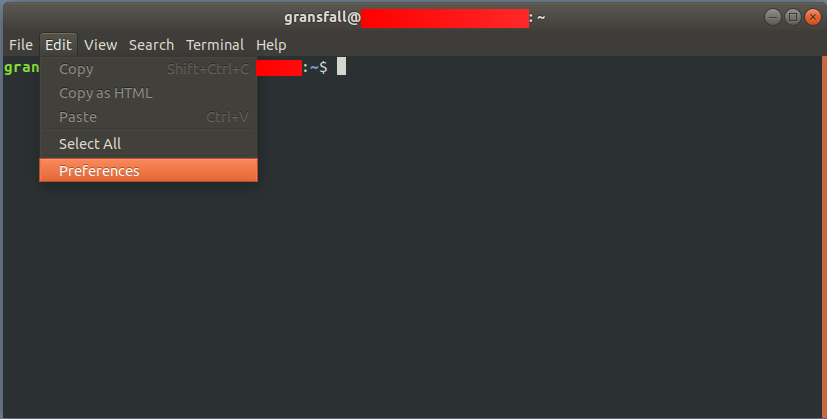

- PASTE INTO UXTERM UBUNTU INSTALL
- PASTE INTO UXTERM UBUNTU MANUAL
Run it in XTerm to test Where -fa is a short-hand for font face and fs is a shorthand for font-size. $ fc-list | cut -f2 -d | | sort -u | less # sort and page through the available fonts - not only fixed width fonts # print out the fixed width fonts that are available with their family nameįc-list :scalable =true:spacing =mono: family The first line below is the best one to use as this will show you the true type fonts that are installed which have a mono spacing option. Advice to use xlsfonts or xfontsel is to view old style bitmapped, fixed width fonts. Find a font that you like Use fc-list or gnome-font-viewer to view true type fonts. PASTE INTO UXTERM UBUNTU INSTALL
Install any font you want from the repositories There are lots in the Ubuntu repositories. This is how you configure them for XTerm: Personally, I prefer a TrueType font with fixed width. Lots of advanced users prefer using bitmapped fixed width fonts in a terminal, search Google for more information. The important difference is that there are old-style bitmapped fixed width fonts and newer TrueType fonts. But for XTerm, we have to explicitly configure the font we want. Fonts in X are a mess as there are old and new systems, luckily end-users don't generally see this. We can improve XTerm's looks by setting a nice looking font. xinitrc I have: if test -f " $HOME /.Xresources" then echo "merging. PASTE INTO UXTERM UBUNTU MANUAL
Errors are written to ~/.xsession-errors (though I didn't use this):įor manual testing that's fine, but depending on how you're starting X you have to tell it to load in the X11 resources that you've defined.

To check it's loading the X resources go to the new XTerm and use xrdb again.

X loads configuration into itself using the xrdb command:
Merge in changes to a running X session with:. Technically, it can be any file you want and you can include others, but this is the standard one to use. The important thing to know is that X is object orientated so the configuration strings are matching object paths in the X server. X11 resources aren't used by modern X UI toolkits (e.g GTK+/KDE) but they're pretty powerful. Find file with some name at some place that not even exist and edit it with some way that not mentioned at all, then add a line in an unspecified place and you done.XTerm can be configured through command line switches, or through X11 resources. The most insane are the solutions that they suggest for ''copy - paste in terminal'' in forums and tutorials. 
I don't need fancy environments and tick boxes, I just don't want to put an unbelievable and unjustifiable amount of effort in order to even try something, paste the dam thing. Then you open the terminal and you try to copy and paste. 1) Create a new empty document in the desktop of Debian.Ģ) Copy and paste commands from browser or wherever you find them on your empty document.ģ) highlight the text you want on the document (just select it and do nothing)Ĥ) put the mouse point on the xterm and click the middle button (roller)įirst attempt to use Linux and you find a guy willing to help you ''You have problem with Linux? no problem just put this command on the terminal: ''.








 0 kommentar(er)
0 kommentar(er)
